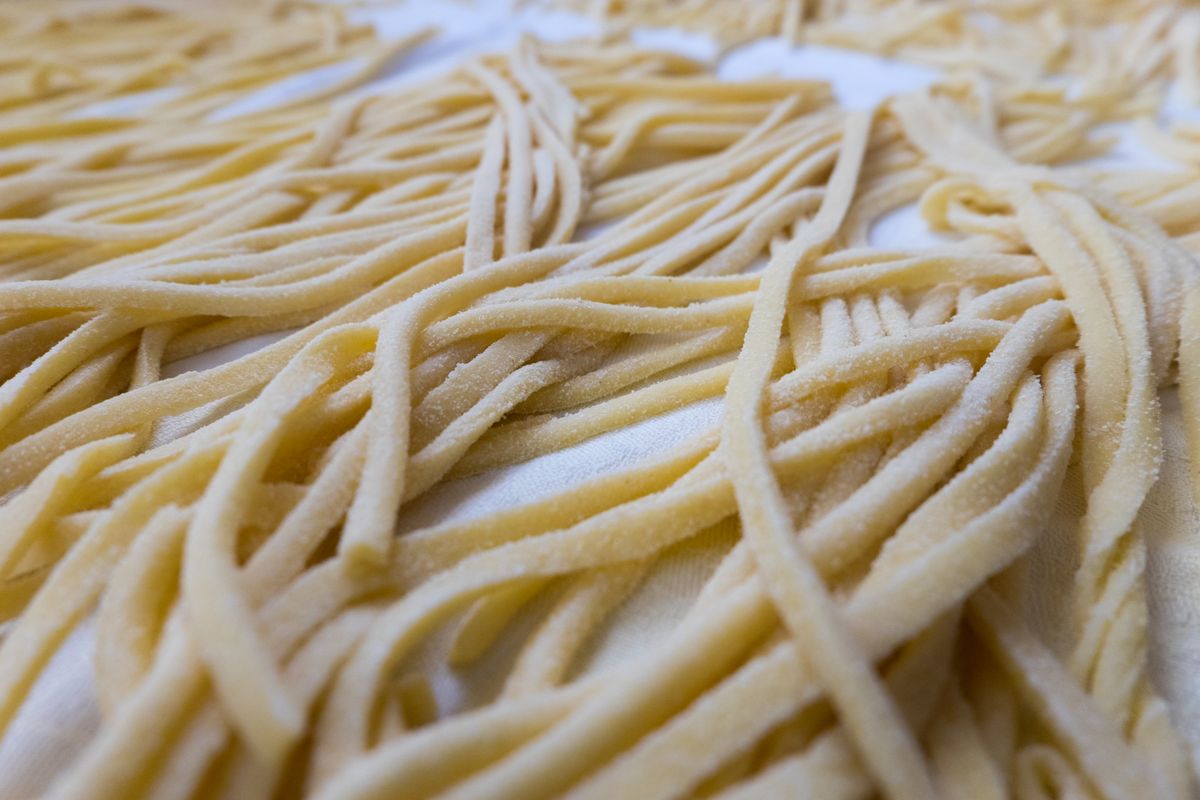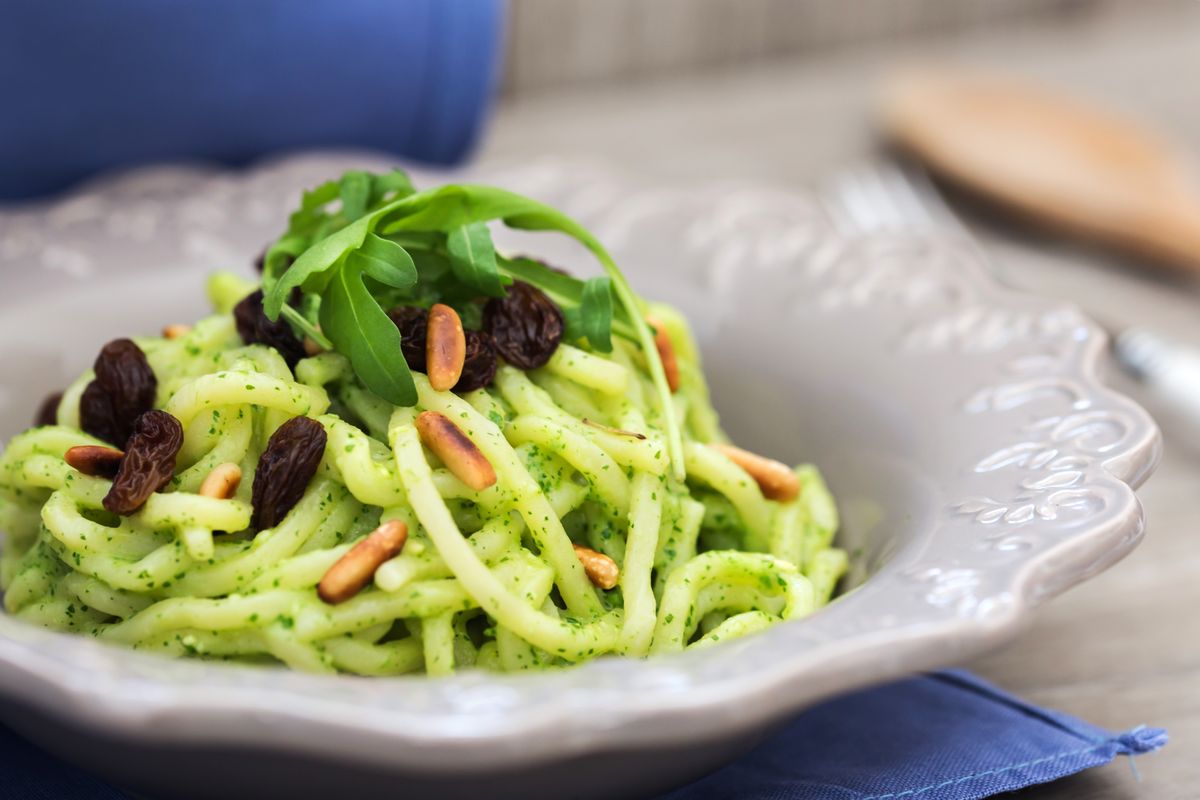Recipes
How to make Apulian troccoli

Troccoli are a typical homemade pasta from Puglia that has the advantage of "dressing" very well with the sauce. Here's how to prepare them and a tip for the dressing.
Troccoli are a homemade pasta prepared with durum wheat semolina flour and cut with a particular grooved rolling pin, also called "troccolo". They are very similar in shape and concept to bigoli from Veneto or spaghetti alla chitarra from Abruzzo: they are large spaghetti with a rough surface and a square section.
If you can't find anything like this in the store, why not try making them at home? It's not as difficult as it might seem and today we'll explain how to proceed!

How to make Apulian troccoli
- To make troccoli at home, start by making the fountain with the flour.
- Add the egg and mix with a fork to mix them together.
- Then add a pinch of salt and, little by little , some tepid water, continuing to knead.
- Add water until you get a smooth and elastic ball , and not sticky.
- Roll out the dough to a thickness of about 3-4 mm with a rolling pin on a work surface floured with more semolina.
- At this point you will have to cut it with the appropriate tool (the troccolaturo) but, if you don't have it, you can use the pasta machine with the spaghetti or tagliatelle die, or the tool to make spaghetti alla chitarra.
- Let the dough rest for 30 minutes before using it.
In the original recipe it seems that the egg was not used, but sometimes egg white was added and a dough was made made up of both semolina flour and 00 flour. To make the dough easier to work with , we decided to include 1 whole egg , however you can try to follow the original recipe to the letter.
storage
It is advisable to consume the homemade troccoli the same day they are prepared, as the pasta tends to dry out excessively.
You can also freeze them : to do this, make small nests of pasta and place them on a tray, keeping a distance between them. Then freeze them in the freezer for a few hours. Once the nests of fresh pasta have solidified, place them in one or more airtight bags and keep them in the freezer, so that they are always available when you need them.
What is troccolaturo
The troccolaturo is an ancient kitchen utensil of Italian origin . In his book "Work of the art of cooking", published in 1570, Bartolomeo Scappi already mentioned it under the name of "macaroni iron" , and provided an illustration of the appearance of the utensil of that period. Originally, it consisted of a metal rolling pin with integrated circular blades , but over time the metal was gradually replaced with hardwood. Today, it is possible to find both types of troccolaturo, especially those made of beech wood and bronze.
Apulian troccoli with turnip tops, raisins and pine nuts: a typical condiment

After preparing the pasta, here is a typical condiment that will certainly not make you look bad at dinner (or lunch) with friends and relatives.
To prepare it you will need:
- 350 g of turnip tops
- 2 handfuls of raisins
- 2 handfuls of pine nuts
- 100 ml of extra virgin olive oil
- 1 clove of garlic
- 1 pinch of crushed red pepper
- Boil a pot of plenty of salted water for the pasta.
- Meanwhile, soak the raisins in a glass of warm water.
- Clean the turnip greens by carefully removing the toughest parts of the stems, cut the latter into small pieces and the larger leaves into pieces, then divide the florets.
- When the salted water boils, add a spoonful of oil and the vegetables, except for the florets which you will add after the first 5 minutes (to prevent them from falling apart while the rest of the vegetables are still hard).
- Cook the vegetables for 10 minutes after the resumption of the boil. Then pour the pasta into the water too, which will be cooked as soon as it comes to the surface.
- Meanwhile, brown the minced garlic clove in the oil. Add the pine nuts, the drained and squeezed raisins and the chilli pepper. Let it flavour .
- Drain the pasta al dente, pour it into the pan and mix well. Serve by dressing each portion with a drizzle of raw extra virgin olive oil.
We are used to seeing turnip tops as a condiment for pasta, but they can also be the protagonists of many different dishes: here are our favorite recipes with turnip tops !
Riproduzione riservata © - WT











